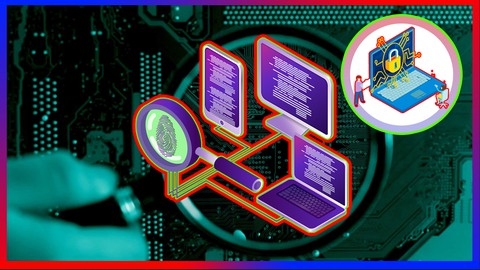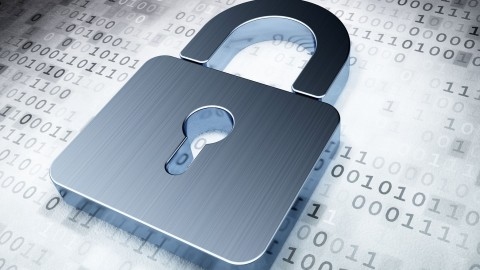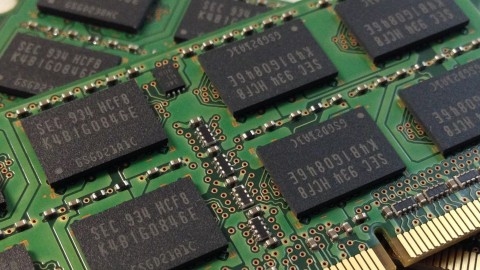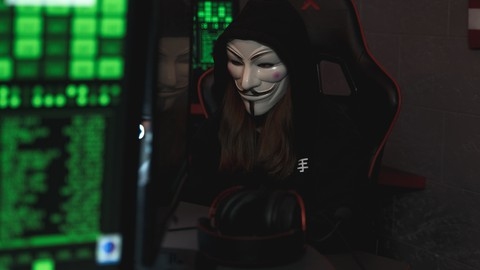Digital forensics is a vital field that uses scientific methods to investigate and analyze digital evidence, uncovering the truth behind cybercrimes and security breaches.
It involves extracting, preserving, and interpreting data from computers, mobile devices, and other digital sources to identify perpetrators, reconstruct events, and provide evidence for legal proceedings.
By learning digital forensics, you can gain a comprehensive understanding of how to investigate digital crimes, analyze data, and contribute to a safer digital world.
Finding the right digital forensics course on Udemy can be a challenge, with so many options available.
You’re searching for a program that’s comprehensive, engaging, and taught by experts, while also fitting your learning style and goals.
We’ve reviewed countless digital forensics courses on Udemy and, based on our analysis, Digital Forensics and Electronic Evidence is the best course overall.
This program provides a strong foundation in digital forensics, covering both theoretical concepts and practical skills.
It teaches you how to recover data, analyze digital evidence, and create forensic images, equipping you with the essential tools and techniques needed to succeed in this field.
While this course is our top recommendation, there are plenty of other great options available.
Whether you’re a beginner seeking a comprehensive overview or an experienced professional looking to specialize in a specific area, we have recommendations to suit your needs.
Keep reading for our full list of courses and find the perfect one to launch your digital forensics career.
Digital Forensics and Electronic Evidence
This Digital Forensics and Electronic Evidence course offers a comprehensive introduction to the field, covering both theoretical concepts and practical skills.
You’ll delve into the diverse sources of electronic evidence, from emails and social media posts to data stored on mobile devices.
The course goes beyond simply identifying these sources, teaching you how to recover data, understand its storage mechanisms, and even perform forensic imaging on computer hard drives and mobile devices.
You’ll gain a practical understanding of the evidence acquisition process, including essential topics like authorization, chain of custody, and hash coding.
The course emphasizes the importance of proper procedures and demonstrates how to create forensic images – a crucial skill for anyone working with digital evidence.
The course doesn’t stop at acquisition; it prepares you for the analysis and reporting stages.
You’ll explore forensic analysis software and learn how to identify patterns and draw conclusions from the evidence.
Mastering the art of clear and concise reporting is a vital skill, and this course provides the foundation you need to confidently communicate your findings.
While this course offers a strong foundation, it’s worth noting that it’s best suited for those new to digital forensics.
More experienced professionals may find the content introductory and may benefit from courses focusing on specific areas of digital forensics or advanced techniques.
Digital Forensics Masterclass : Forensic Science DFMC+ DFIR
This course offers a comprehensive dive into the world of digital forensics, equipping you with the skills to investigate cybercrime and uncover digital evidence.
You’ll embark on a journey that spans from understanding the evolving landscape of cyber threats to mastering the art of analyzing digital devices and networks.
You’ll gain a solid understanding of various cybercrime techniques, from the insidious tactics of phishing to the crippling impact of ransomware.
You’ll delve into the intricacies of different storage media, from the classic magnetic tapes and floppy disks to the modern marvels of flash drives and solid-state drives.
This knowledge will provide you with a deep understanding of how data is stored and how to effectively recover it during investigations.
You’ll explore a wide range of tools crucial for digital forensics, like Volatility for memory analysis, SBLSTR for subdomain discovery, and GHDB for reverse image searches.
You’ll learn how to use these tools to uncover hidden clues, analyze network traffic, and piece together the digital puzzle of a cybercrime.
This course goes beyond theory, providing you with hands-on experience.
You’ll learn to build your own digital forensics lab, master the powerful tools of Kali Linux and Metasploitable, and acquire volatile memory using tools like MGNT and FKMT.
You’ll also become proficient in fundamental Linux commands, navigating the Linux terminal with ease.
Beyond individual devices, you’ll delve into the realm of network forensics, exploring the TCP/IP model and gaining a thorough understanding of how data travels across networks.
You’ll also explore the exciting world of mobile forensics, learning how to analyze Android and iOS devices to extract crucial evidence.
The course incorporates Open Source Intelligence (OSINT), teaching you how to leverage publicly available information to gather evidence.
This skillset is invaluable in modern investigations.
Ultimately, this course empowers you to confidently analyze digital evidence, investigate cybercrime, and contribute to a safer digital world.
Surviving Digital Forensics: Resolving Attached USBs
This course is a comprehensive deep dive into the world of USB analysis, equipping you with the skills to extract valuable information from seemingly ordinary devices.
You’ll begin by mastering the identification of crucial details like the USB’s serial number and its first connection to a system, utilizing tools like USBView.
You’ll also learn to decode the VID and PID, unique identifiers assigned to each USB device, providing a clear understanding of its identity and purpose.
Beyond basic identification, you’ll delve into the intricacies of volume drive letters, GUIDs, and volume names, uncovering how these elements relate to USB usage and provide valuable clues about its history.
You’ll then explore the CurrentControlSet, a vital component that holds crucial data about the last time the USB was attached to the system.
The course goes beyond theoretical knowledge, offering practical exercises and worksheets to solidify your understanding.
You’ll learn to locate hidden files and analyze data harvested from USB devices, mastering techniques for extracting evidence of user activity, last attachment times, and even potential downloads.
Through these exercises, you’ll gain hands-on experience and develop the confidence to confidently interpret the evidence found on a USB drive, effectively utilizing your newfound skills in real-world scenarios.
Computer Forensics and Digital Forensics Masterclass PRO+
This “Computer Forensics and Digital Forensics Masterclass PRO+” course is a deep dive into the world of cybercrime investigation, equipping you with the knowledge and skills to unravel digital mysteries.
You’ll navigate the intricate landscape of cybercrime, learning to identify, analyze, and gather evidence with precision.
The journey begins with a solid foundation, introducing you to fundamental concepts like TCP/IP, networking, and the evolution of storage media.
You’ll journey from the days of magnetic tapes and floppy disks to modern flash drives and solid-state drives, gaining a comprehensive understanding of data storage and retrieval.
Next, you’ll delve into the critical realm of cybersecurity fundamentals, learning about firewalls, VPNs, and DMZs – essential tools for safeguarding computer systems from attacks.
You’ll even get the chance to build your own digital forensics lab using virtual machines, Kali Linux, and Metasploitable, providing hands-on experience to solidify your skills in a controlled environment.
The course then takes you to the heart of digital forensics, focusing on the art of evidence acquisition.
You’ll learn to collect data from various sources – RAM, non-volatile memory, storage devices – utilizing tools like FKMT, BLKSFT, and FKT to acquire and analyze the digital traces left behind.
You’ll also gain expertise in analyzing storage devices using tools like FRMT, SLCPL, and BLK_EXT, uncovering hidden data, reconstructing deleted files, and gaining a deep understanding of how data is stored.
This knowledge will be invaluable when piecing together the puzzle of cybercrime.
The course goes beyond the technical aspects, exploring incident response fundamentals, including evidence collection, hash algorithms, and the power of boolean types and comparison operators in programming.
You’ll also learn to identify and analyze malware like CRIDEX and R2D2, gaining insights into their inner workings and how to neutralize their threats.
A significant portion of the course focuses on Linux, the powerful operating system favored by many digital forensics professionals.
You’ll master basic Linux commands, navigate the Linux filesystem, and gain a fluency in the shell.
This knowledge will become your trusted companion when working with digital evidence.
You’ll also explore the exciting world of mobile forensics, learning to acquire and analyze data from Android and iOS devices, a crucial skill in today’s mobile-centric world.
The course concludes with a digital forensics final exam, giving you the opportunity to showcase your acquired skills and solidify your understanding of the field.
This masterclass is a comprehensive guide to the world of digital forensics, equipping you with the tools, techniques, and knowledge to pursue a rewarding career in this exciting and constantly evolving field.
Digital Forensics: A Practical Guide for Pentesters
You’ll start by building your own forensics lab environment using VirtualBox, setting the stage for hands-on learning with virtual machines running Windows 10, Metasploitable2, and Kali Linux.
This practical approach allows you to immediately apply theoretical concepts in a safe and controlled environment.
You’ll dive deep into the intricacies of digital forensics, exploring topics like network forensics, legal considerations, and the analysis of digital evidence.
You’ll gain a thorough understanding of cybercrime types and motivations, providing a crucial foundation for your investigations.
The course then introduces you to powerful tools like Autopsy, a leading forensic analysis platform, and Wireshark, a versatile network traffic analyzer.
You’ll learn how to effectively use these tools to examine forensic disk images and capture and analyze network traffic, respectively.
The curriculum doesn’t stop at basic techniques.
You’ll delve into advanced areas like memory forensics, employing the Volatility framework to analyze memory dumps for crucial evidence.
You’ll also gain experience in reverse engineering malware using Ghidra, a powerful open-source tool for analyzing malicious code.
Additionally, you’ll learn how to utilize Sysinternals tools for proactive malware hunting and analysis, enhancing your ability to detect and respond to threats.
The course culminates in a series of Capture the Flag (CTF) labs, providing real-world scenarios that test your acquired skills in a practical and engaging setting.
These CTFs offer a unique opportunity to apply your knowledge to solve challenges, analyze data, and uncover hidden clues.
While the course provides a strong foundation in various digital forensics techniques, its emphasis on practical applications and hands-on learning makes it particularly valuable for aspiring digital investigators.
The inclusion of CTF labs further enhances the learning experience by providing a realistic environment to test and refine your skills.
Surviving Digital Forensics: Link Files
This course dives deep into the often-overlooked world of link files, those hidden clues that can unlock vital connections in a digital forensics investigation.
Forget about the dry theory – this course gets you hands-on with real-world tools and scenarios.
You’ll learn to identify and analyze embedded file paths, volume names, and MAC times, all key elements in pinpointing the “who, what, when, and where” of digital activity.
You’ll work through exercises using the same tools and techniques used by professionals, building confidence and sharpening your skills in the process.
Beyond the individual exercises, the course also highlights the power of automation.
You’ll discover automated tools that streamline your link file analysis, saving you time and effort while ensuring comprehensive results.
Become a Digital Forensics Investigator with Autopsy!
This course provides a solid introduction to the world of digital forensics using Autopsy, a powerful tool widely employed by professionals.
You’ll begin by learning how to install Autopsy and set up your first investigation.
From there, you’ll dive into the core techniques of digital forensics, uncovering suspect data through keyword searches, examining suspicious email and browser activity, and unearthing hidden metadata within files and images.
The course goes beyond the basics, exploring advanced techniques like extracting deleted items from the recycle bin, analyzing geolocation data associated with files, and converting HEX to ASCII.
You’ll also learn about Shell Bags, which can provide valuable insights into file system activity.
This course is a great starting point for anyone interested in entering the field of digital forensics or expanding their knowledge of Autopsy.
Surviving Digital Forensics: Windows Shellbags
This course, part of the SDF Series, doesn’t just introduce you to Windows Shellbags; it equips you to master them for your
You’ll begin with a strong foundation, understanding exactly what Shellbags are and their significance in investigations.
The course then seamlessly transitions into hands-on learning with FTK Imager, putting theory into practice with real-world scenarios.
You’ll analyze Shellbag data on local systems, connected USB drives, and even networked drives, gaining invaluable skills for your investigations.
What sets this course apart is its focus on practical application.
You’ll be guided through various exercises, learning to interpret Shellbag data, identify potential limitations, and extract valuable insights from them.
Surviving Digital Forensics: RAM Extraction Fundamentals
This course dives deep into the critical skill of RAM extraction, a must-have for any digital forensics professional.
You’ll understand why RAM holds such importance in investigations, and gain insights into the ongoing debate surrounding its use.
The course lays a strong foundation by guiding you through setting up your environment for successful RAM capture.
You’ll explore a range of powerful tools including DumpIt, Belkasoft’s RAM Capturer, Magnet RAM Capture Tool, and FTK Imager RAM Capture.
The hands-on experience with these tools is invaluable, giving you practical skills to capture and analyze RAM data effectively.
The course also walks you through using Paladin ISO and Inception, equipping you with the necessary tools for RAM extraction.
This practical approach is a key strength, ensuring you’ll develop the skills needed to extract and analyze RAM data in real-world investigations.
You’ll leave the course confident in your ability to apply these techniques to real-world cases.
Intro to Windows Digital Forensics and Incident Response
This digital forensics course offers a comprehensive introduction to the field, equipping you with the essential knowledge and skills to tackle investigations in the digital age.
You’ll delve into the science behind digital forensics, learning how to preserve data and conduct thorough investigations that hold up in court.
The course doesn’t shy away from practical applications.
You’ll gain hands-on experience creating group policies to monitor access, analyzing security logs, and even uncovering how hackers exploit LNK files to spread malware.
You’ll also learn how to leverage industry-standard tools like Autopsy to build cases, analyze network traffic, and uncover digital evidence.
Beyond individual tools, you’ll explore the role of SIEM solutions in analyzing security logs and identifying malicious activity.
You’ll learn to review registry changes and analyze running processes to uncover evidence of malware, giving you a deep understanding of how attackers operate.
This knowledge will prepare you for a career in cybersecurity, digital investigations, or even legal proceedings involving digital evidence.










